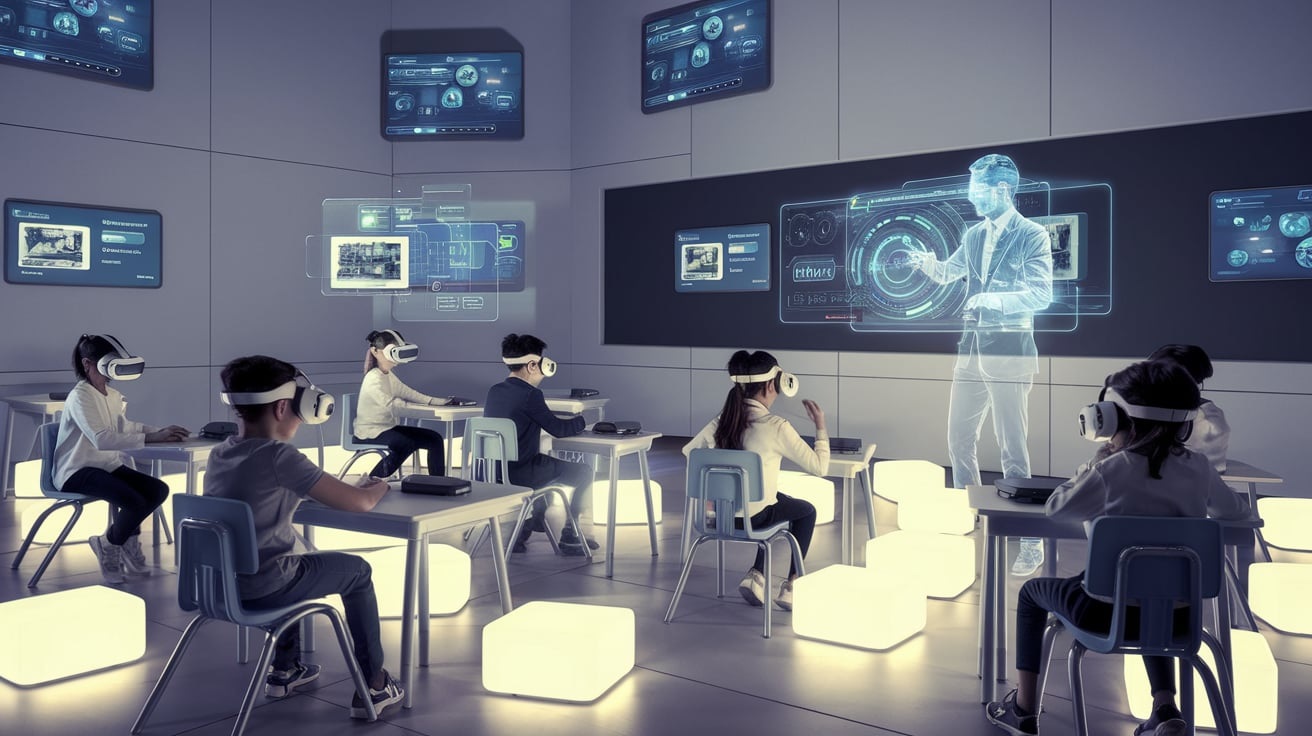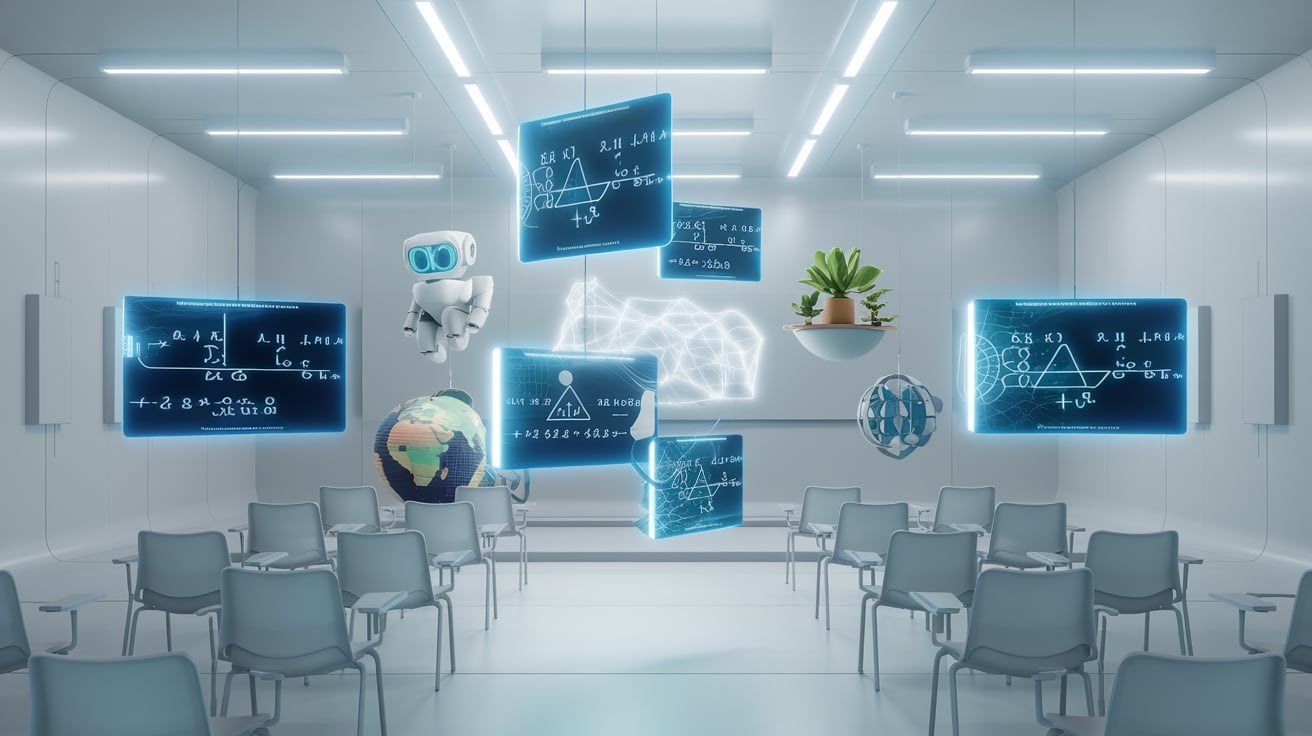
How Technology Is Changing the Way We Learn
The way we learn has advanced powerfully over the years, especially with the rapid integration of technology. Technology has introduced new opportunities for students and teachers, from e-learning platforms to artificial intelligence and virtual reality.
Are you curious about how these changes have shaped education? Let's explore how technology improves access and redefines the learning experience.
The Evolution of Educational Technology
Education was sometimes more flexible and interactive than it is now. Initially, classrooms relied on tools like chalkboards and textbooks.
Introducing overhead projectors and educational television marked the first steps toward integrating technology into learning. These tools enhanced teaching but needed to change how students engaged with information. The arrival of the internet was a game-changer. Suddenly, information was available at the click of a button.
Platforms like Moodle emerged in the early 2000s, offering online courses and collaborative tools. This shift laid the groundwork for today's digital learning environments. By 2019, 95% of schools in the United States provided students with internet access, emphasizing the importance of connectivity in modern education.
Key Technologies Transforming Education
Integrating technologies—e-learning platforms, AI, VR/AR, and gamification—is not just a trend but a transformation in education. Each technology brings unique benefits, from increasing accessibility to making learning more engaging and personalized.
The true power lies in combining learning tools and developing a holistic and inclusive learning environment that meets the various needs of modern learners.
As we continue to innovate, learning technologies promise to make education more flexible, interactive, and inclusive, ensuring that students worldwide can access high-quality learning experiences tailored to their unique needs.

1. E-Learning Platforms
E-learning platforms have revolutionized education by breaking traditional geographical, time, and cost barriers.
Platforms like Coursera, Khan Academy, and Udemy have democratized learning, making high-quality courses available to anyone with an internet connection.
Picture a farmer living in a distant village or a stay-at-home parent eager to learn new skills and advance their knowledge. These platforms allow learners from anywhere worldwide to access resources previously limited to specific institutions or locations.
For example, Coursera offers partnerships with leading universities like Stanford and Yale, providing learners access to Ivy League-quality education without leaving their homes.
One of the most significant advantages of e-learning platforms is flexibility. Unlike traditional classroom settings that operate on fixed schedules, e-learning allows learners to customize their study times. Individuals can learn at their convenience, Whether early in the morning or late at night. This is particularly valuable for working professionals balancing their jobs and education.
For Example, A marketing professional in India who wants to transition into data analytics can take a self-paced data science course from MIT on edX without disrupting their work schedule.
E-learning platforms are also significantly more affordable than traditional education. Courses often come with financial aid options or subscription models, making them accessible to a broader audience. Platforms like Udemy offer courses starting at just a few dollars in regions with prohibitively high education costs.
The e-learning industry's projected growth to $375 billion by 2026 underscores its increasing importance. This expansion isn't just about more courses; it includes innovations like interactive video lectures, community discussions, and peer-reviewed assignments. For example, platforms now offer micro-credentials, certifications, and complete degrees, making them legitimate alternatives to traditional education pathways.
2. Artificial Intelligence in Education
AI has become an essential part of modern education, revolutionizing both students' learning and teachers' instruction.
AI-powered tools can analyze student performance in real-time, identifying areas of strength and weakness. Using this analysis, the curriculum can be adjusted to address individual needs, ensuring that every student is supported. This level of personalization was nearly impossible in traditional classrooms.
For Example, DreamBox Learning provides students with math lessons tailored to their proficiency levels, helping them build confidence while improving their skills.
AI doesn't just benefit students; it's a powerful tool for educators. Automated grading systems can handle multiple-choice questions, essay assessments, and attendance tracking, saving teachers valuable time. This allows them to focus on developing creative lesson plans or providing one-on-one guidance to students who need it most.
AI-driven chatbots serve as virtual tutors, answering students' questions 24/7. They're accommodating for students who may hesitate to ask questions in class. For example, a language-learning platform might use AI chatbots to help learners practice conversational skills in a low-pressure environment.
According to McKinsey, AI could save teachers up to 20% of their time on repetitive tasks, effectively increasing their capacity to deliver quality education.
3. Virtual and Augmented Reality
Innovative technologies, such as VR and AR, transform how abstract and complex subjects are taught.
With VR and AR, students can explore subjects in ways that were once unimaginable. For example, a history student can "walk" through ancient Rome or visit World War II battlefields. Similarly, a biology class can use AR to dissect a frog without picking up a scalpel, providing a safe and ethical learning environment.
At Stanford University, medical students use VR simulations to practice surgical techniques, allowing them to gain confidence without risking patient safety.
Studies have shown that immersive technologies improve focus, retention, and understanding. A report by PWC highlighted that VR learners complete tasks four times faster and are more emotionally connected to the material than those in traditional settings.
While VR headsets and AR tools were once expensive, their costs are decreasing, making them viable options for schools and institutions.
For example, platforms like Google Expeditions provide affordable virtual field trips, empowering students to explore the world without leaving the classroom.
4. Gamification
Gamification uses game elements such as points, leaderboards, and achievements to make learning more engaging and enjoyable.
Gamification leverages the natural human drive for competition and the satisfaction of achieving goals. Students are more likely to stay engaged when learning feels like a game rather than a chore.
For example, Duolingo's language-learning app rewards users with badges and streaks for consistent practice, motivating them to return daily.
A 10-year-old mastering Spanish on Duolingo might spend extra time on the app to maintain their streak, unknowingly reinforcing their learning.
Studies show that gamified learning increases retention by up to 12%. This is because students are actively participating rather than passively consuming information. Activities like quizzes, interactive lessons, and reward systems encourage deeper cognitive engagement.
Gamification isn't limited to apps. Teachers incorporate gamified classroom elements, such as point systems for completing assignments or interactive quiz games like Kahoot. These activities foster collaboration, friendly competition, and a sense of achievement among students.
Benefits of Technology in Education
Personalized Learning
Technology allows students to progress through their learning at a pace that suits them best.
-
Tailored Lessons: Adaptive systems adjust content based on a student's understanding.
-
Improved Outcomes: Adaptive learning increases pass rates by 20%.
For example, a dyslexic student using an AI tutor receives customized exercises focusing on phonics, helping them improve their reading skills.
Increased Accessibility
Technology bridges gaps for students in remote or underserved areas.
-
Global Impact: During the COVID-19 pandemic, over 1.6 billion students accessed online learning.
-
Initiatives: Solar-powered tablets provided education to children in remote African villages.
Enhanced Engagement
Interactive tools like videos, quizzes, and simulations keep students interested. Students using AR tools scored 25% higher on tests than traditional methods.
As a parent, I've noticed that my child stays more engaged when learning math through educational apps than traditional worksheets.
Challenges of Digital Learning
Digital Divide
Access to technology is only equally available to some students. Forty percent of students globally lack reliable internet access. Programs like Google's Project Loon aim to provide internet access to remote areas.
Privacy and Security
Collecting student data raises concerns about potential misuse and vulnerability to cyberattacks. In 2021, cyberattacks on schools increased by 30%. Implementing secure, GDPR-compliant systems can address these concerns.
Teacher Adaptation
Many educators need help to integrate technology into their teaching. About 70% of teachers feel unprepared to use digital tools effectively. Ongoing professional development programs help teachers embrace new technologies.
Case Studies and Real-Life Examples
-
Estonia's Digital Success: Estonia has digitized its entire education system, from e-learning platforms to national digital exams, setting a global benchmark.
-
AI in Ghana: AI tutors are being used in Ghana to teach STEM subjects in underfunded schools, providing quality education to students who lack access to human teachers.
Future Trends in Educational Technology
The future of educational technology promises transformative advancements that cater to the evolving needs of students and educators. Artificial Intelligence (AI) is poised to become a cornerstone in curriculum development, creating dynamic, student-centered learning paths that adapt over time to individual strengths and challenges.
This approach ensures that education becomes more personalized and effective for every learner. Similarly, immersive technologies like Virtual Reality (VR) and Augmented Reality (AR) are expected to gain widespread adoption in classrooms.
These tools will enable students to engage in hands-on experiences, such as exploring historical events, conducting virtual science experiments, or practicing real-world skills in a safe, simulated environment.
Additionally, blockchain technology offers a secure solution for managing academic records, providing transparency, preventing fraud, and ensuring the credibility of credentials. Together, these trends signify a future where technology enhances education and makes it more accessible, engaging, and trustworthy for all.
Conclusion
Technology is reshaping how we learn, making education more personalized, accessible, and engaging. Although issues such as the digital divide and data security remain, the advantages far surpass the challenges. By embracing these innovations, we can create an education system that is inclusive, flexible, and prepared for the future.
Let's make the most of these tools to ensure that education becomes a right, not a privilege, for every learner worldwide.
Frequently Asked Questions (FAQs)
How does technology improve learning outcomes?
Technology improves learning outcomes by personalizing lessons, increasing engagement, and providing access to global resources.
What are the challenges of using technology in education?
Common challenges include the digital divide, data privacy concerns, and the need for teacher training.
What is the role of AI in education?
AI personalizes education by analyzing student performance and automating repetitive tasks for educators.
How does virtual reality enhance learning?
VR provides immersive experiences, making complex concepts easier to understand and remember.
How can we bridge the gap of the digital divide in education?
Governments and organizations can work together to provide devices, reliable internet access, and digital literacy training to communities lacking sufficient resources.
Future Education Digital Learning

